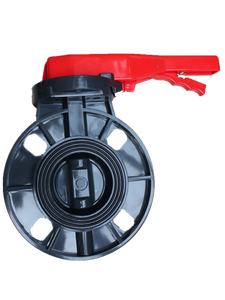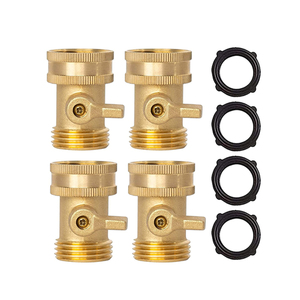
All categories
Featured selections
Trade Assurance
Buyer Central
Help Center
Get the app
Become a supplier

(309 products available)





















spear valves have differing functions. Valves have these different functions because of their unique features and structures. These differences in functionality and parts make some spear valves suited for axial fluids, while others are better for radial fluid applications. Here are some spear valves for differing applications:
The closing element of this valve type is the plug. Its shape resembles the pointed end of a spear. This plug is also called the spear. It features a tapered end that fits snugly into the seat.
This valve is commonly used in applications that involve positive displacement pumps. It is also used in vessels containing viscous fluids. In these applications, the plug's shape enables effective sealing and control of fluid flow, enhancing the operation's efficiency.
This variant of the spear valve incorporates a spear-shaped element as its core part. This variation of the spear valve uses a spear with a cylindrical shape. It extends from the actuator into the valve body.
It is ideal for extruders and piston-driven equipment. Some of its ideal applications are in processing thick slurries or materials with a high solids content. Its design provides a clear path for the material to flow while minimizing resistance. This characteristic helps maintain pressure and drive the material through the system.
This type of check valve allows and restricts the flow of materials that can possibly damage equipment. It does this by featuring a closing member shaped like a spear. This spear can be an actual spear point or a spear-shaped ball.
The spear check valve protects systems from backflow. Systems with high and low differential pressures benefit from this check valve. Spear and ball-type check valves have a similar function and shape for their closing elements. So, if only one of these valves can be found in the market, ball check valve manufacturers will use the spear type for subsequent releases.
Knowing the operating conditions and maintenance requirements of spear valves is very important. This knowledge will ensure their optimal performance and longevity. Here are some aspects of the specifications and maintenance of spear valves:
Spear valves come in multiple configurations. Each configuration has a different closing element or plug. The plug material must be compatible with the fluid to avoid reactions that will affect performance.
Common materials for spear valve plugs include:
Spear valves must be made with corrosion-resistant materials. These materials are required when the valves are exposed to aggressive chemicals or high humidity. Common materials with this ability are:
Wear resistance is a critical element when selecting a spear valve. This is particularly key if the media contains solids or abrasive particles. Wear-resistant materials include:
Proper maintenance of spear valves will help keep them functional as required. Some key maintenance considerations for spear valves to maintain optimal performance and have a longer wear life include:
This involves frequently checking spear valves for visible damage, such as cracks and wear. Inspecting the valves ensures any issues are addressed before they cause major performance problems. One way to inspect the valves is to run a visual check on them. This way, the damage can be spotted, if any. Another way to inspect the valves is through a performance check. This allows one to know if there is an issue with its functionality.
A spear valve will have an extended life if it is well-lubricated. Lubrication reduces friction and wear, allowing the valve to open and close smoothly and preventing rust. Using the right lubricant for the material and operating environment is important. Use a lubricant with high resistance to high temperatures if the working environment is too hot.
Valves either use PTFE, FKM, or other elastomer sealing materials. These are usually worn out over time and need to be replaced. Using worn-out sealing materials will make the closing element unable to seal fluids effectively. Inspect seals regularly for wear, cracks, or deformation. Inspect them closely to determine their next cause of action. The oils from the seal might also affect the seals. Keep the valve as clean as possible.
Wear on the closing element, valve body, and other parts is inevitable. Know how the wear looks like and how to measure it. Common signs of wear for closing elements are scratches and dents. This affect the valve's ability to seal properly. Use a wear measurement device to measure the degree of wear.
Due to their ability to tolerate a variety of demanding conditions, spear valves are extensively utilized within industrial activities. High-precision spear valves control the flow of complex materials in these scenarios, leading to smooth operation.
Spear valves control and isolate hazardous and viscous chemicals for chemical manufacturers. Their ability to handle solid-laden and corrosive slurries makes them ideal for this industry.
The valves help contain sticky that deposit on the valve's internals in this industry. Spear valves also help maintain the required level of hygiene due to their easy-to-clean designs. Their high level of precision translates to accurate measurements of high-value medications.
Spear valves withstand the harsh chemicals and solid waste materials encountered in waste treatment systems. Their durable construction and ability to handle abrasive and corrosive media make them invaluable for managing wastewater and sludge efficiently.
Spear valves help control suspensions and high-viscosity food products like sauces and purees in this industry. The sanitary design of spear valves meets food safety regulations for hygiene and easy cleaning.
High-solid-content materials like slurries and mud are encountered in mining. The abrasive nature of these materials can damage many things, but not spear valves. Thanks to their durable, wear-resistant materials, they can handle the demands of this industry without suffering damage.
Spear valves control thick crude oil and other viscous liquids and gases in this industry. Their high-pressure tolerance and sealing capability ensure safe and efficient operation in pipeline transmission and refining processes.
Spear valves control and isolate slurries containing high concentrations of solids like sand, clay, and minerals. Their resistance to abrasion and wear ensures long-term reliability in this demanding application.
Spear valves are required for different kinds of operations, as discussed above. The spear valves required for these operations will depend on what chemicals, materials, or substances the valve will handle. Here is a guide on what to consider as the buyer when selecting a spear valve:
Spear valves operate under varying temperatures and pressures. Understanding these two will help select one that will effectively perform its duties within its limit. Choosing one that operates optimally within the pressure and temperature range of the working environment is crucial.
Spear valves come in different maintenance levels. Some spear valves require too much maintenance, while others do not. A variable factor that contributes greatly to maintenance is the material used for the valve. For example, stainless steel valves require less maintenance than tungsten carbide valves.
Another thing that adds to the cost is the frequency of replacements. A valve that requires frequent adjustments will add more to the overall operational cost than one that does not.
Spear valves are made with distinct materials for different parts depending on the application requirements. Here are some materials commonly used and what they are suited for:
Spear valves control flow in three different ways. They are designed in three different ways to accommodate different kinds of flow characteristics. Here are the three flow characteristics and how each characteristic influences the choice of spear valve:
A. Yes, a spear valve can be used to create a spear check valve, which will prevent backflow. A spear check valve will still function the same way as a ball check valve since the two are similar in shape and function. The only difference is in the closing element's shape. One has a closing element that resembles a ball, and the other one has a spear.
A. Frequent leaks from the valvular area are a major sign that replacement is needed. Another sign is if there is an increase in back pressure. If the valve closes, but the fluid still goes through, that is a clear sign of valve failure. Refer to the user manual for other signs and tips on replacing the valve.
A. No, not all spear valves require lubrication. Only spear valves with lubricated-seal applications require lubrication. The lubricant to be used must be compatible with PTFE.
A. Maintenance for spear valves mostly occurs every six months. However, this figure heavily depends on the application and operating conditions. Valves that are subjected to harsh or heavy use should be maintained more frequently than those in lighter service.